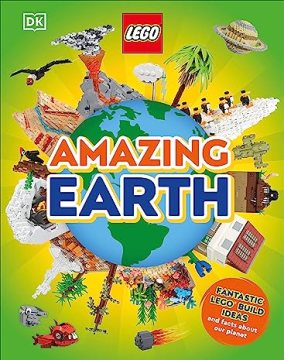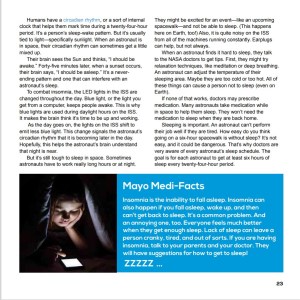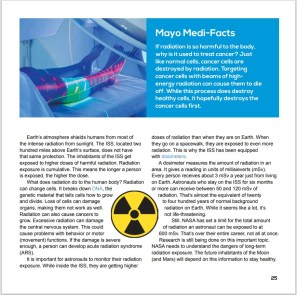I’m thrilled to welcome middle-grade and picture book author Toni Buzzeo to the Mixed-Up Files. Congrats on your debut MG, Toni. I’m happy dancing that it’s been chosen as a Junior Library Guild Gold Standard Selection. That’s fantastic! What inspired you to write Light Comes to Shadow Mountain?
I am thrilled to qualify at long last for MUF with my first MG novel!
As for inspiration, you’ll read in my Author’s Note that I had encountered two essential books. The first was Mary on Horseback by Rosemary Wells. I fell in love with that lyrical book with its musical language and stories based on the life of nurse-midwife Mary Breckinridge. I learned about the important work that Mary did in the mountains of Eastern Kentucky establishing the Frontier Nursing Service to bring medical services to those mountains and went on to do much more reading and research.
Then, three years later, Kathi Appelt and Jeanne Cannella Schmitzer published Down Cut Shin Creek, about the intrepid librarians of the Pack Horse Library Project who delivered books to the homes and one-room schoolhouses scattered across those same mountains. Both the FNS and the PHLP were in operation at the same time in the same place!
Add in the fact that in 2011, I learned that the mountains of Eastern Kentucky were dark, without electricity until 1937, and I knew I had the makings of a powerful story. However, what I didn’t know was that the story I wrote—a picture book—needed a lot more words and space to tell it properly.
I’m so glad you expanded it into this amazing novel. After having 31 picture books published, what was it like writing your debut MG? Are there picture book skills that helped, or ones you had to push aside while writing this?

Economy of words, a skill I’d employed over the course of 31 picture books, was a skill I had to push aside. Many of my editor’s early notes and line-edits challenged me to expand on description. I had learned, especially as picture book texts became ever-shorter over the last two decades, that one should scorn the paragraph and use a sentence instead, scorn the sentence and employ a carefully crafted phrase, scorn the phrase and find a single word if you could!
Perhaps the most important skill that I did bring along from picture books to the MG novel was the use of lyrical language. I started my writing life as a teenage poet and the drive to employ poetic language has never left me. Given the MUCH broader canvas of a novel, I was able to employ so much more of it in telling this story. My favorites were similes, metaphors, and personification. I had to assume that most of my readers weren’t familiar with my setting, but I enjoyed sharing the minute details of that setting in this way.
A couple of my favorite similes from the novel:
“Now, our beechnut isn’t a practical tree to climb—silver bark as smooth as river rocks and no low-slung branches like the others nearby.” (Chapter One: In the News)
He [Pap] holds my gaze. “I think you’re near old enough to understand this, Cora. Your mommy is in a mighty struggle with a demon as fierce as that giant catfish folks say pulls people underwater.” (Chapter Four: Mommy Has a Day)
A couple of my favorite metaphors from the novel:
“I chew on Glenna’s words for a silent moment, trying to separate out electricity from Glenna’s description of a crowded, busy city.” (Chapter Eleven: Ready for the Bee)
“Cora Mae Tipton, the heroine of the day,” Pap says as I fling myself into his arms. “I hear you and Stormy flew down the mountain with the wings of Pegasus to save your sister!” (Chapter Thirty-Eight: The Interview)
And here are two of my favorite uses of personification, both from Chapter Eight: Pies, Pies, Pies:
“On the way down the path after school, the reds of the sourwood and sumac shout their glory.”
“It was the very isolation and the quiet darkness of Shadow Mountain that called to our Scots-Irish ancestors, Cora Tipton.”
I love these so much, Toni! Your language absolutely sings.
What tips do you have for people writing MG for the first time?
For me, the most important practice was immersion in the world of the novel. I read only books set in my geographic landscape (Eastern Kentucky) during the period of time I was writing about (the late-1930s). I watched (and watched and watched) films and shorter documentaries about the area. I sought out photographs from the area, especially portraits of individuals and families. I listened to so many interviews of people who had lived a childhood like Cora’s young life themselves. I mined all of those sources, not just for the volumes of notes I took, but for the bonus it gave me—a sense that I, too, was inhabiting Cora’s world.
I also learned a lot from three of my mentors, Donald Maass, Lorin Oberweger, and Brenda Windberg at the Breakout Novel Intensive (BONI) and the Breakout Novel Graduate Learning Retreat.
The most helpful craft book I read and employed was James Scott Bell’s Write Your Novel from the Middle: A New Approach for Plotters, Pantsers, and Everyone in Between, recommended by my friend, novelist Dorian Cirrone, my chief plot brainstormer and multiple-draft reader.
And perhaps most importantly, I’d advise you to join a critique group of really smart, really dedicated, really talented writers. I’m lucky enough to have two groups. (If you peek into the acknowledgements in my novel, you will see the members of both groups named.) To employ an overused phrase, it really does take a village!
Yes! It definitely takes a village. And having trusted critique groups and mentors is a huge help. I’ve heard amazing things about the Breakout Novel events. And I absolutely love the Writing The Breakout Novel Workbook by Donald Maass. It’s helped me have so many amazing ‘aha’ moments.
How did you make Cora’s world so vivid? The neighborhood map is helpful and gave me a glimpse of the setting immediately. Did you use a map or other methods while drafting and revising?
Well, as I’ve said, I dug deeply into details of the place. What animals lived there? What was the weather like? What were the most beautiful aspects of the geography? What were the harsh geographic challenges? And for so many scenes, I worked to imbue them with these details (often expressed lyrically as you’ve seen).
As to that wonderful map, no, I didn’t work from a paper map of Shadow Mountain and Spruce Lick. It was 100% in my mind. I did, however, know every inch of that mountain. So when Kelly, my editor, asked if she could draw the first draft of the map (it was eventually rendered by the cover illustrator, David Dean), I said sure. But honestly, I think the story did such a good job of describing the place that Kelly’s hand-drawn map got it almost entirely right—just as I’d pictured it in my mind.
Can you share a writing exercise with everyone?
Picture the main character of your picture book or novel. What pose are you seeing them in? Get a clear picture of them–standing, seated, reclining–and imagine the position of each of their limbs, of their hands, of their feet. What does this pose, with its details, reveal to you about their core personality? Now ask yourself how this core trait will be/is revealed in your story. How will that trait play out in the outer story arc (external journey) and inner story arc (internal journey)?
I love this, Toni! I’ve never seen this exercise before, and will definitely use it on my novels and picture book main characters in the future. Thank you!
Is there anything else you’d like our readers to know?
 I write in a fairytale writing cottage that my late husband Ken built for me when we lived in Maine. I moved to Massachusetts after his death, but I brought the cottage with me and did much of the work on Light Comes to Shadow Mountain right in that cottage. There’s even a video of it being built on my website.
I write in a fairytale writing cottage that my late husband Ken built for me when we lived in Maine. I moved to Massachusetts after his death, but I brought the cottage with me and did much of the work on Light Comes to Shadow Mountain right in that cottage. There’s even a video of it being built on my website.
I’m currently working on my second MG novel. It’s a Colonial time-travel novel set in contemporary Maine and 1770 Maine Territory, Massachusetts, on the cusp of the Revolutionary War. I wrote the first draft 37 years ago when I really didn’t know a thing about writing a novel. Now I hope to employ my mad skills and those of my brilliant editor to bring it to print!
Your fairytale writing cottage looks amazing! I’m so glad you were able to bring it with you to Massachusetts. Your second MG sounds fantastic. I hope it will be out in the world soon.
Thank you so much for stopping by the Mixed-Up Files—and for your generous book giveaway. One lucky reader will win a copy of Light Comes to Shadow Mountain. U.S. only. Enter the Rafflecopter below.
 It’s 1937 and the government is pushing to bring electricity to the mountains of southeastern Kentucky. It’s all Cora can think of; radios with news from around the world, machines that keep food cold, lightbulbs by which to read at night! Cora figures she can help spread the word by starting a school newspaper and convincing her neighbors to support the Rural Electrification Act.
It’s 1937 and the government is pushing to bring electricity to the mountains of southeastern Kentucky. It’s all Cora can think of; radios with news from around the world, machines that keep food cold, lightbulbs by which to read at night! Cora figures she can help spread the word by starting a school newspaper and convincing her neighbors to support the Rural Electrification Act.
But resistance to change isn’t easy to overcome, especially when it starts at home. Cora’s mother is a fierce opponent of electrification. She argues that protecting the landscape of the holler—the trees, the streams, the land that provides for their way of life—is their responsibility. But Cora just can’t let go of wanting more.
Lyrical, literary, and deeply heartfelt, this debut novel from an award-winning author-librarian speaks to family, friendship, and loss through the spirited perspective of a girl eager for an electrified existence, but most of all, the light of her mother’s love and acceptance.
*A Junior Library Guild Gold Standard Selection
a Rafflecopter giveaway
The winner will be shown here and contacted on Thursday, July 20. Good luck. 😊
 Toni Buzzeo is a New York Times bestselling children’s author of thirty-one picture books and board books, and her first middle grade novel, Light Comes to Shadow Mountain, a Junior Library Guild Gold Standard selection. A former librarian and writing teacher, Toni and her books have won many awards, including a 2013 Caldecott Honor for One Cool Friend, illustrated by David Small. Her fictional characters sing with her deep understanding of human emotion. Endlessly enthusiastic, Toni draws on her career experiences as a school librarian in crafting her books and speaking with young audiences in schools and libraries. Toni lives in Arlington, Massachusetts just downstairs from her two lovable grandchildren (endless sources of inspiration!).
Toni Buzzeo is a New York Times bestselling children’s author of thirty-one picture books and board books, and her first middle grade novel, Light Comes to Shadow Mountain, a Junior Library Guild Gold Standard selection. A former librarian and writing teacher, Toni and her books have won many awards, including a 2013 Caldecott Honor for One Cool Friend, illustrated by David Small. Her fictional characters sing with her deep understanding of human emotion. Endlessly enthusiastic, Toni draws on her career experiences as a school librarian in crafting her books and speaking with young audiences in schools and libraries. Toni lives in Arlington, Massachusetts just downstairs from her two lovable grandchildren (endless sources of inspiration!).
Like this:
Like Loading...
 DEKE MOULTON: Thank you so much for having me! DON’T WANT TO BE YOUR MONSTER is a middle grade spooky adventure about two vampire brothers who are sick (in their own ways) of the secret life their mothers want them to live, especially when they find out there’s a serial killer in their small, sleepy Pacific Northwest town. Adam wants to use his vampire powers (and protections) to track down and stop the killer, whereas Victor sees the killings as a way to get guilt-free blood.
DEKE MOULTON: Thank you so much for having me! DON’T WANT TO BE YOUR MONSTER is a middle grade spooky adventure about two vampire brothers who are sick (in their own ways) of the secret life their mothers want them to live, especially when they find out there’s a serial killer in their small, sleepy Pacific Northwest town. Adam wants to use his vampire powers (and protections) to track down and stop the killer, whereas Victor sees the killings as a way to get guilt-free blood.


 We’re excited to have Jennifer Swanson on here today to talk about her two new releases. Let’s start with learning a bit more about her, and then we’ll talk more about both of her books, Spacecare: The Kids Guide to Surviving Space and LEGO: Amazing Earth.
We’re excited to have Jennifer Swanson on here today to talk about her two new releases. Let’s start with learning a bit more about her, and then we’ll talk more about both of her books, Spacecare: The Kids Guide to Surviving Space and LEGO: Amazing Earth.










 I write in a fairytale writing cottage that my late husband Ken built for me when we lived in Maine. I moved to Massachusetts after his death, but I brought the cottage with me and did much of the work on Light Comes to Shadow Mountain right in that cottage.
I write in a fairytale writing cottage that my late husband Ken built for me when we lived in Maine. I moved to Massachusetts after his death, but I brought the cottage with me and did much of the work on Light Comes to Shadow Mountain right in that cottage.  It’s 1937 and the government is pushing to bring electricity to the mountains of southeastern Kentucky. It’s all Cora can think of; radios with news from around the world, machines that keep food cold, lightbulbs by which to read at night! Cora figures she can help spread the word by starting a school newspaper and convincing her neighbors to support the Rural Electrification Act.
It’s 1937 and the government is pushing to bring electricity to the mountains of southeastern Kentucky. It’s all Cora can think of; radios with news from around the world, machines that keep food cold, lightbulbs by which to read at night! Cora figures she can help spread the word by starting a school newspaper and convincing her neighbors to support the Rural Electrification Act. Toni Buzzeo is a New York Times bestselling children’s author of thirty-one picture books and board books, and her first middle grade novel,
Toni Buzzeo is a New York Times bestselling children’s author of thirty-one picture books and board books, and her first middle grade novel,